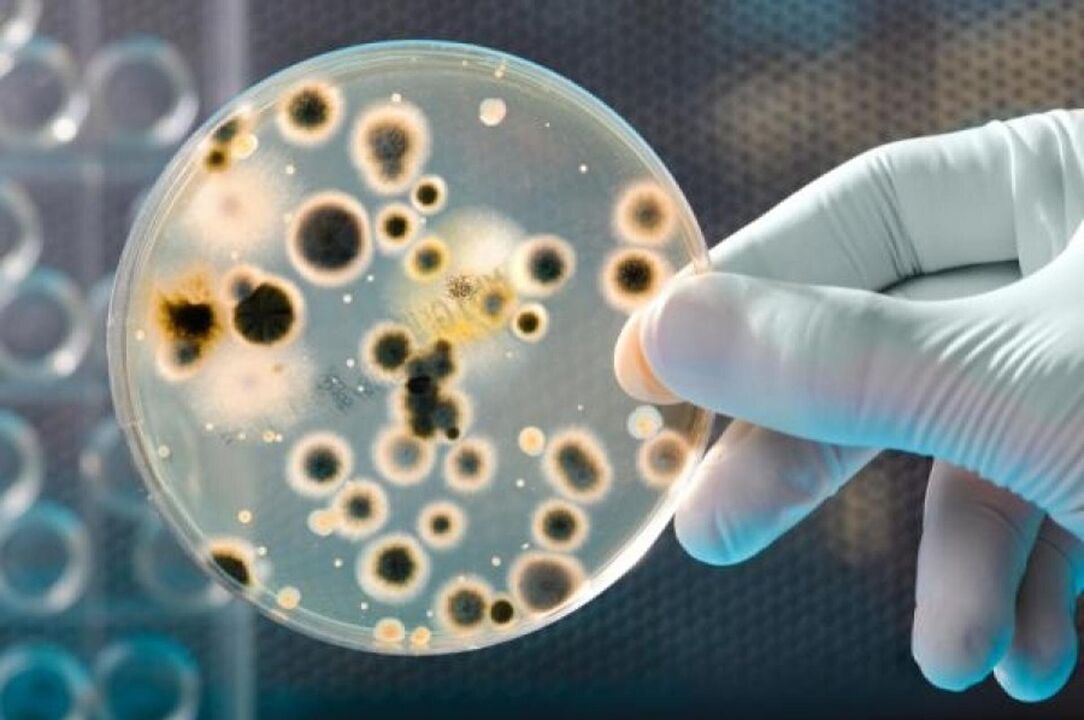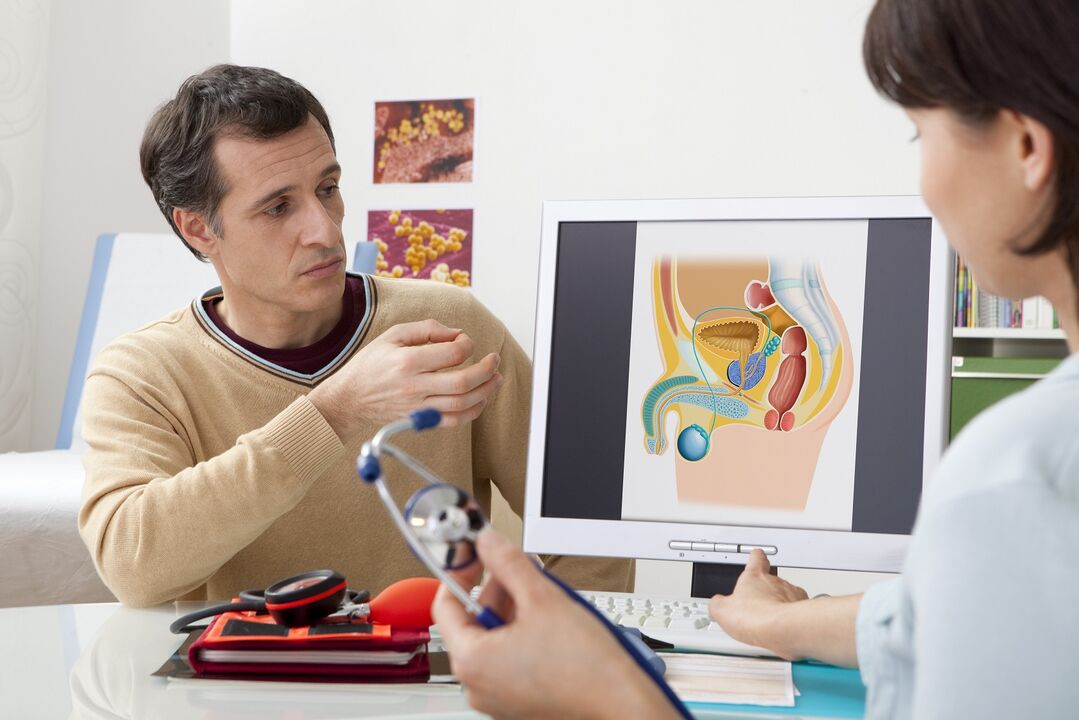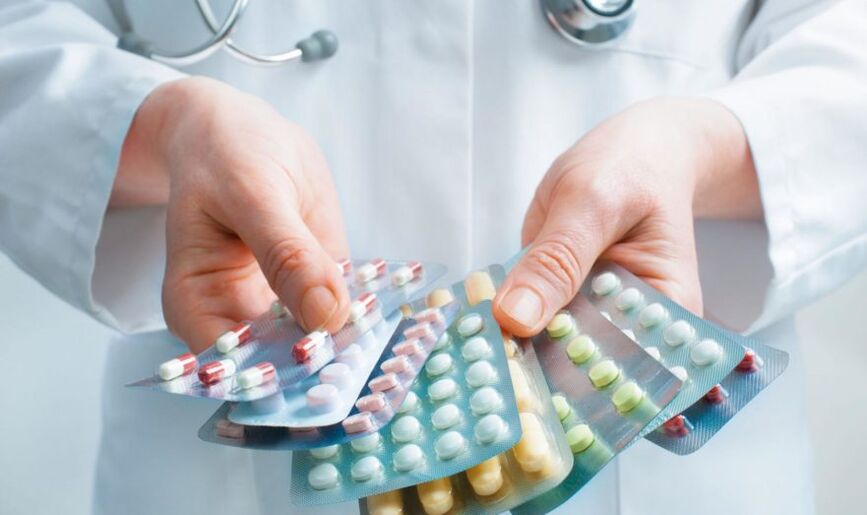According to BME, prostatitis is an inflammatory process that occurs in the prostate gland in men with damage to the parenchyma and interstitium. In men, the treatment of prostatitis is a long and difficult event, most often due to the initial complete ignorance of the disease. What is prostatitis, what are the causes and first signs, what you need to know about the topic of "diagnosis" and what modern methods exist to treat prostatitis. In this review article, every man should know about prostatitis.

Ab ovo - from the egg
We are not talking about the satires of Horace, in which case I am interested in everything related to prostatitis, from the beginning of treatment to the last "squeak. "The symptoms of prostatitis in men occur during the period of active sexual activity, from the age of 25 to 45, in a thematic video you can study in detail everything about the basics, causes and symptoms of the disease, the features of the diagnosis and treatment.
The causes of prostatitis are widespread. In the case of prostatitis, the infectious factors have the greatest weight in the development of the disease:
- Acute form. The coconut flora acts as a provocative cause.
- Chronic form. The reasons for its development are more extensive, as the primary factors in such prostatitis in men are: gonococci, Trichomonas, Gr + and Gr-bacteria, mycobacterium tuberculosis. In rare cases, the diagnosis includes mycoplasmas, viruses, fungi, chlamydia, and so on.
It is noteworthy that chronic inflammation of the prostate caused by a pathogen that has entered the prostate gland may later have a pathogenic factor and may be of an bacterial nature. The acute form is more often provoked by external causes: hypothermia, urethral trauma or bladder damage due to endoscopic examinations or various manipulations, hypodynamics and consequent violation of the blood and lymph circulation in the pelvis (congestive prostatitis), hormonal or autoimmune diseases.

Often, only one type of prostatitis is reported - infectious, but the WHO estimates that bacterial prostatitis accounts for up to 10% of all cases of the disease, while chronic abacterial prostatitis is recorded in 90% of cases.
Table 1. Brief characteristics of the pathology
| Categories of prostatitis | Acute infection | Presence of the pathogen in the secretion of the prostate or in part 3 of the urine | Leukocyte level (increase) with m / s secretion or urine |
| 1 cat. Acute bacterial | + | + | + |
| 2 cat. Chronic bacterial | - | + | Uncertain (or not) |
| 3 a. Non-bacterial chronic pelvic pain syndrome of an inflammatory nature | - | - | + |
| 3 b. Prostatodynia, a non-inflammatory pelvic pain syndrome | - | - | - |
| 4 cat. Asymptomatic inflammatory process | - | Uncertain (yes or no) | Uncertain (yes or no) |
The etiology of bacterial prostatitis in acute and chronic manifestations has been studied in more detail, with bacteria belonging to the family becoming the cause of the disease in most cases. Enterobacteriaceae (E. coli bacillus). The role of atypical microorganisms in causing prostatitis (ureplasma, chlamydia, mycoplasma) is currently not fully established. Symptoms of prostatitis in men who show signs of weakened immunity, especially in people living with HIV, can be caused by yeast (Candida spp. ) Or mycobacterium tuberculosis.
Prior to the era of antibiotics, the gonococcal flora (Neisseria gonorrhoeae) played a significant role in the development of prostatitis, especially as a cause of its abscess.
The causes of the bacterial form of prostatitis have not been fully investigated, although urologists have thoroughly studied the list of possible pathogenetic (provoking prostatitis) factors that play an important role in the occurrence of prostatitis in the absence of microorganisms. Thus, the causes of non-bacterial prostatitis are pelvic stagnation processes, circulatory disorders, intraprostatic urinary reflux, and an autoimmune aseptic inflammatory process.
Sick or not - that's the question
What does a man look like in prostatitis? For a man who is far from medicine and even more unfamiliar with the problems of urology, the male appearance of one person is no different from the weight of others. And only an experienced professional will understand from a patient’s first complaints where the root of the problem is ripe and how to eliminate it.

The symptoms of prostatitis are often described in several sentences, highlighting the brightest moments, and this plays a cruel joke with a man. Relying on such inaccurate definitions ignores the really important bells, as the disease does not exist, although in reality the clinical picture depends on the nature of the morphological changes in the prostate.
The earliest symptoms are associated with the following types of prostatitis:
- Catarrhal prostatitis. Dull pain in the perineum radiating to the sacrum is a common nocturnal urge.
- Follicular prostatitis. Difficulty and frequent urination, sometimes with delay. Pain during "squirting", which worsens at the end of the urination process, as well as defecation. Low fever.
- Parenchymal prostatitis. There are pronounced symptoms of dysuria, often AUR, pain during natural healing, general poisoning up to 40 C.
In prostatitis with abscess formation, the symptoms are stronger if the abscess enters the rectum or part of the prostate of the urethra. With such a breakthrough, the symptoms are relieved. If the abscess is opened in the paraprostatic tissue or in the perineal region, visual symptoms may be observed: swelling, redness, with marked fluctuation. At the same time, the man's condition is deteriorating sharply.
Comprehensive treatment of prostatitis should not begin without a thorough examination of the man, analysis of the diagnosis and symptoms that may directly indicate the type of disease.
In general, they distinguish between acute and chronic course of prostatitis, you can find out in detail in an online thematic video which symptoms indicate one form or another. Let's look at this question in more detail.
Its acute - typical symptoms are characterized by three stages: catarrhal, follicular and parenchymal. These are described in detail above.

The most interesting form of symptoms is the chronic form of prostatitis, as there are many variations in the symptoms. In general, the effective treatment of prostatitis depends on the type of prostatitis, or rather.
In the phase of coronation, the following moments can be distinguished:
- Chronic prostatitis is rarely the result of an acute process.
- The primary prostatitis disappears with symptoms.
- A characteristic symptom of chronicity is a slight discharge from the urethra during defecation.
- The first symptoms are usually not expressed, the pathological process itself develops over the years. It is preceded by prostosis (congestion of the capillaries), which smoothly becomes an abacterial form of inflammation of the prostate.
- It is not a specific pathogenic microflora that causes chronic prostatitis, but the chronic process itself is a complication of the inflammatory process due to the effects of ureaplasma, Trichomonas, chlamydia, and gonococcus.
How does a man feel in chronic prostatitis? Patient feedback shows that most often, minor pain is felt in the perineum for the first time, a slight flow that most men simply do not pay attention to. The next stage is the association of the following symptoms: burning sensation in the urethra, sexual dysuria, general malaise. Frequent miscarriages during sex make men depressed, irritable, or depressed.
It is important to understand that all of these signs do not necessarily occur in every single chronic case, this is what makes diagnosis difficult in the early stages of the disease, and the symptoms tend to change location, which is even more misleading.
Long-term syndromes
What can you expect from chronic prostatitis? If there is no timely diagnosis and treatment - nothing good, all professionals will confirm this. This type of prostatitis is characterized by 3 syndromes:
Pain
The prostate itself does not hurt, but many nerve endings pass through it and are nearby that are inevitably involved in the inflammatory process. The pain can vary in intensity - from mildly painful to uncomfortable to severe, which prevents you from sleeping soundly. Irradiation of pain occurs in all nearby areas (scrotum, sacrum, perineum), pain caused by prostatitis should be distinguished from similar symptoms of other diseases.

Dysuria
Dysuric syndrome always refers to a failure of the urinary system, but the diagnosis reveals what caused it. The increased volume of the prostate inevitably compresses the urethra and the flow of urine is interrupted, followed by a frequent stimulus to use the toilet, a feeling of incomplete emptying of the bladder. In advanced prostatitis, there is compensatory hypertrophy of the muscle layer of the bladder and ureters. At this point, the symptoms of dysuria are relieved but return again in an elevated form.
Sex without pleasure
Declining intimate life - these are the first symptoms that men notice and are thought to force them to see a doctor. Frequent nocturnal erections, discontinued orgasms, poor erections, and rapid ejaculation are pain that worries the stronger sex the most. In the advanced stage of chronicity, nothing good can be expected from prostatitis, and erectile dysfunction often develops.
The extent of sexual disturbance in men is not the same, someone starts having sex and somehow ends up, brushing off the characteristic bells. For some, even the initial weak reaction of the penis to a glamorous stimulus becomes a collapse and the onset of creepy experiences that turn into prolonged depression. The ghost of impotence is difficult for patients with prostate problems, and experts and relatives almost always notice that prostatitis spoils the character.
To learn more about the disease, you can study a themed video where experts explain many of the nuances of pathology.
What to write on the card
What record appears on a patient's medical record and what final diagnosis is made depends on a range of primary examinations, from the patient's visit to the urologist and his or her complaints (history) to the final stage of the diagnostic procedure. Exactly what is required depends on the type of prostatitis, its disregard, and the patient's consent to specific diagnostic procedures.
Usually, the diagnosis consists of:
- History. The doctor will ask you in detail about all the complaints and symptoms, the preconditions for the disease, and so on.
- Urinalysis.
- Prostate massage (digital rectal examination + secretion collection).
- Ultrasound of the prostate.
- Spermograms.
- Prostate biopsy (if indicated).
What does diagnostics give and how important is it? If you read the opinions of patients, you can often understand that most men try to avoid many stages of diagnosis while the motivations are very different. The price of such carelessness is your own health! It is important to note that prostatitis can only be cured if it is "caught" in time and the diagnosis is made accurately by determining the form and cause of the disease.
How to be forever healthy
So the man understands that he has prostatitis, what awaits him in the future, and is it possible to restore his lost health? It is important to understand that you need to get rid of prostatitis for twice as long as you have developed it. Moreover, if the pathological process has almost gone beyond the man’s attention, prostatitis is treated with his direct involvement. Regardless of whether the acute or chronic prostatitis is curable - yes, if you follow all the recommendations of your doctor, a stable remission of the chronic form can be achieved during treatment.

The stages of treatment for prostatitis depend directly on what the doctor ultimately found during the study, the type of disease, the age of the patient, and their physical characteristics.
The treatment regimen is always strictly individual, but may include the following points:
- Antibacterial therapy.
- Physiotherapy methods.
- Phytotherapy.
- Appointment of immune correctors.
- Urological massage.
- Physiotherapy.
The cost of each stage of treatment varies, depending on the total cost of the medications prescribed, the additional methods, and the clinic. Preventive measures after treatment have an important reason - they prevent the recurrence of the disease. Prevention is directly and closely linked to treatment, and the basics of prevention are as important as adherence to all medical requirements during therapy.
Treatment of the acute form
The period of exacerbation requires taking antibiotics, which are drunk in a course. In the presence of chlamydia infection, drugs of the cephalosporin series are indicated.
The duration of the course is considerable, with an average of at least 3-4 weeks of antibiotics being drunk to prevent relapse. Sometimes the doctor continues treatment for a longer period of time, antibiotics are combined with painkillers to relieve the pain.
Antibiotic treatment is carried out according to the following rules:
- Bacterial culture is required to determine the susceptibility of microorganisms to the drug.
- The side effects and contraindications of the drugs are taken into account.
- They take into account the previous course, when it was, what tools were used and the result.
The need for additional treatment methods is determined by the treating physician, it should be borne in mind that massage is contraindicated in the acute form of prostatitis, as it provokes the spread of bacterial infection throughout the body, followed by bacteremia and sepsis.

Treatment of chronic form
It’s important to keep in mind that you can’t get rid of chronicity quickly, in principle, the disease has developed over the years, and even doctors in their field can’t eradicate it in a matter of weeks. there is no need to speak to those who have cured the disease in 2-3 days. The goal of treatment is to stop the infection from focusing, to restore the immunity and prostate function in men, and to prevent exacerbation, which takes time.
The process of antibiotic therapy lasts for 4 to 12 weeks, with low treatment efficacy still taking the drug. Antibacterial drugs are most commonly prescribed in combination with other anti-inflammatory drugs. In advanced cases, the operation is performed by partially or completely excising the prostate.
Free of bacteria and symptoms
The characteristic difference of the therapy is the lack of antibiotics, without the presence of the pathogenic microflora, they are simply not needed. But sometimes experts prescribe a short course of medication within 2-4 weeks.
Treatment of abacterial prostatitis is based on the use of physiotherapy methods: iontophoresis, ultrasound, laser therapy, electromagnetic radiation, and symptomatic therapy to strengthen the patient's immune system.
The treatment of non-bacterial prostatitis is also based on changes in diet and lifestyle, baths and alpha-blockers.
Asymptomatic prostatitis is difficult to detect, the PSA method is used in the diagnosis, followed by a 2-week course of antibiotics. They then choose an individual symptomatic treatment.
In general, the treatment of any type of prostatitis is a long-term phenomenon and is not always pleasant for the patient. In addition to physical discomfort, one also suffers spiritually because the most valuable part of the body - the intimate one - is affected. The opinion of those who cure the disease shows that only strict adherence to the doctor's instructions, coupled with a change in diet and lifestyle, pays off. The cost of a frivolous attitude to treatment is very high - not only does a person lose their health, but their whole life, character, and relationship with others change. To prevent this, the health of the prostate gland should be monitored and the causes of the disease eliminated.





























